Learn about Backpacking Stoves
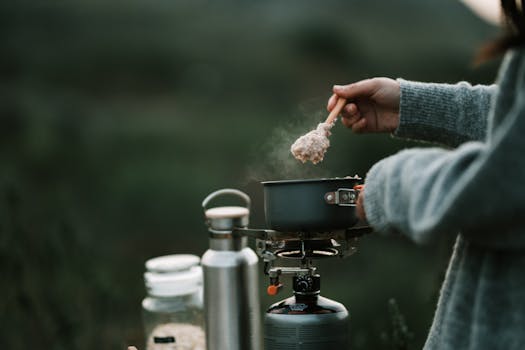
Table of Contents
Why Buy A Stove?
If there are water sources on your hike, a stove can save you weight and space by allowing you to cook freeze-dried meals. A stove is also a good backup system for sterilizing water if something happens to your main water-treatment system.
Stoves can be surprisingly affordable.
Canister Stoves
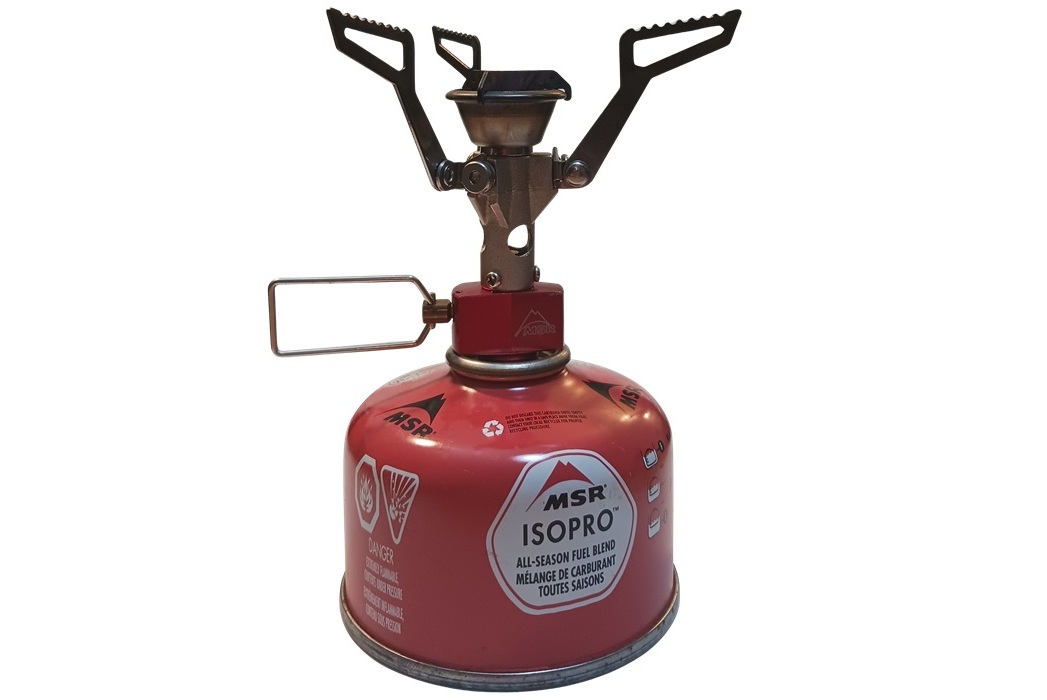
MSR Pocket Rocket
The stove screws onto the top of a fuel canister containing a mixture of isobutane and propane.
| Pros | Cons |
|---|---|
| • Easy to set up • Easy to use • Fast boil • Lights easily • Flame adjusts easily • Canister self-seals so fuel doesn’t leak • No cleaning or maintenance necessary | • Hard to tell how much fuel is left in canister • Don’t burn very hot at very cold temperatures • May not work as well at high altitudes • Fuel expensive • Fuel canister bulky and heavy • May not hold large pots securely • Unstable on uneven ground • Fuel hard to find in some countries • Not safe to use a windscreen because it could trap heat and cause fuel to explode |
Remote Canister Stoves
The stove is connected to a fuel canister via a fuel hose.
| Pros | Cons |
|---|---|
| • Stable on uneven ground • Canister can be inverted to improve performance at cold temperatures | • Slightly less convenient than screw-on canister stoves |
Integrated Canister Systems
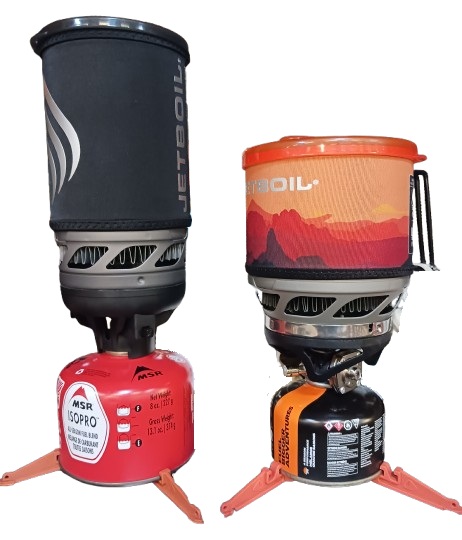
The stove burner is integrated with a fuel canister and insulated cooking pot.
| Pros | Cons |
|---|---|
| • Fast boil • Fuel-efficient | • Often not compatible with other pots • Expensive |
Liquid Fuel Stoves
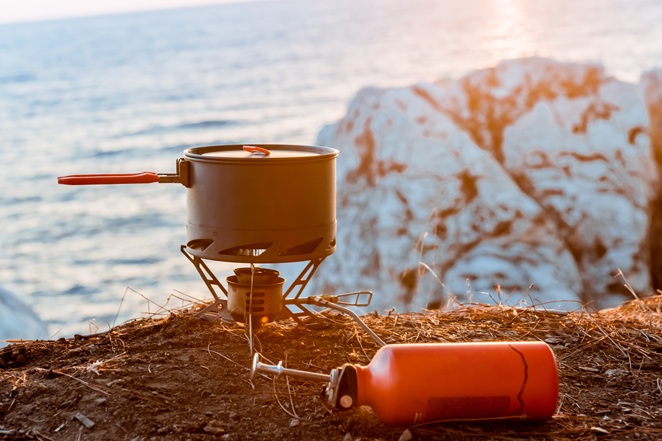
The stove connects via a fuel hose to a refillable fuel bottle. The fuel is usually white gas, but multi-fuel stoves can also burn other fuels such as kerosene, unleaded auto gasoline, or diesel gasoline.
| Pros | Cons |
|---|---|
| •Burn hot •Fast boil •Perform well at cold temperatures • Perform well at high altitudes • Stable on uneven ground •Easy to tell how much fuel is left in the bottle • Fuel inexpensive • Fuel easy to find in most countries • Fuel bottle is reusable | •Expensive •Fuel bottle heavier and bulkier than a canister • Require priming • Fuel spills possible • Require cleaning and maintenance |
Solid Fuel-tablet Stoves
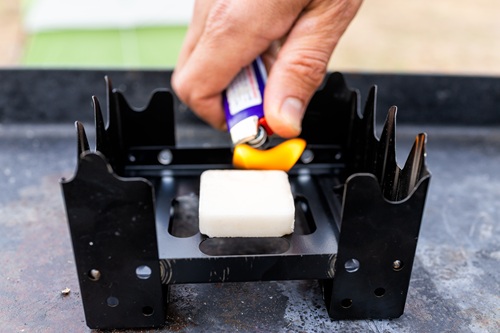
The solid fuel tablets are usually hexamine or trioxane.
| Pros | Cons |
|---|---|
| • Lightweight • Small • Easy to use • Work well in cold weather • Inexpensive | • Don’t burn very hot • Slow boil • Can’t control temperature • Fuel tablets leave soot on pots • Fuel tablets toxic • Chemical odor |
Denatured-alcohol Stoves
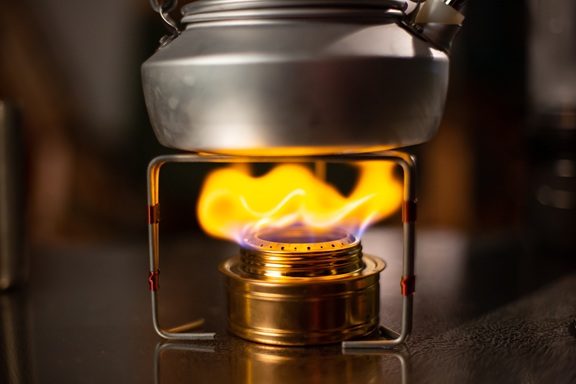
These small, lightweight stoves burn denatured alcohol.
| Pros | Cons |
|---|---|
| • Inexpensive • Very light weight and packable • Denatured alcohol inexpensive and easy to find | • Don’t burn very hot • Slow boil • Not fuel-efficient • No flame control • A windscreen is often necessary • Fuel can be hard to find outside the U.S. |
Wood-burning Stoves
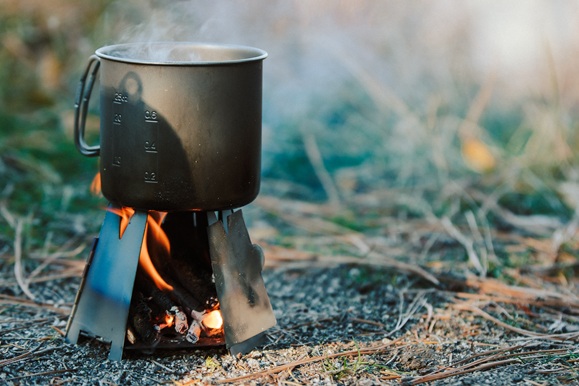
These stoves burn biomass such as small branches, twigs and leaves.
| Pros | Cons |
|---|---|
| • Simple • No fuel cost •Primative and fun | • May be hard to find dry wood • Hard to control flame • Banned in some areas because of fire hazard |
